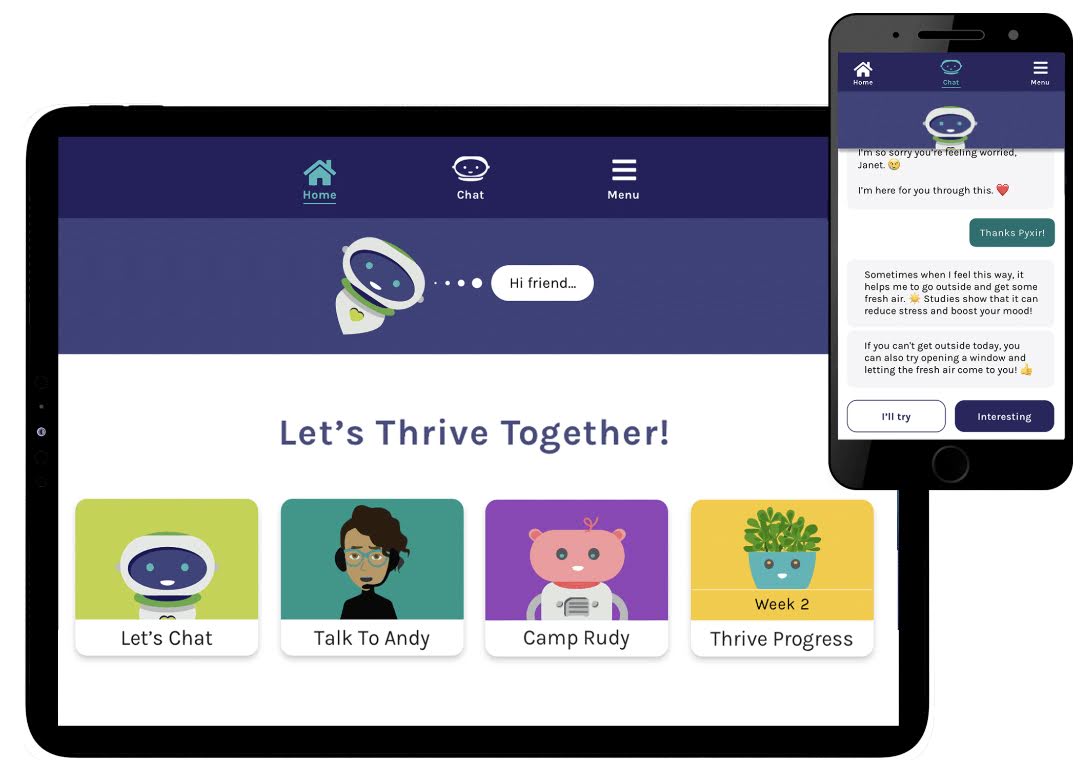The NARBHA Institute: Creating ‘livable communities’ in northern Arizona
Community collaboration and health equity research are keys to The NARBHA Institute’s effective programs
How do you create healthy, livable communities?
If you follow The NARBHA Institute’s successful formula, you start by bringing together strong, innovative organizations already making a difference for good in communities and offer them targeted health equity research they can use to build essential and effective programs.

The NARBHA Institute––a trailblazer in research, treatment and services for their community’s physical and behavioral health needs in all facets of health equity––has been an important leader in advancing the wellbeing of northern Arizona communities for more than 55 years.
“We have been so fortunate to partner with The NARBHA Institute on a number of health equity projects over the last 10 years,” said Regents’ professor Julie Baldwin, NAU’s Department of Health Sciences and Center for Health Equity Research (CHER) executive director. The NARBHA Institute has provided critical leadership in our region especially around behavioral health needs.”
This year, a CHER research team, led by Baldwin, is conducting an update of the Regional Health Equity Assessment for The NARBHA Institute. On the CHER team is also Taylor Lane, research scientist; Michael McCarthy, associate professor, NAU Department of Social Work; Mark Remiker, senior research coordinator; Indrakshi Roy, assistant professor, Department of Health Sciences and CHER (now assistant professor, Indiana University), and Juliette Roddy, The NARBHA Institute James Wurgler MD Chair of Criminal Justice and Behavioral Health Department of Criminology and Criminal Justice.
Through the assessment results, The NARBHA Institute hopes to understand and focus their efforts on the most pressing health issues facing northern Arizona, especially those exacerbated by policy changes and crises such as the COVID-19 pandemic.
The NARBHA Institute history

The NARBHA Institute began in 1967 as the Northern Arizona Regional Behavioral Health Authority with a mission to conduct community programs, research, treatment and services in the mental health field.
By developing partnerships with diverse health equity organizations, The NARBHA Institute now builds foundational programs that address northern Arizona’s social and health-related needs, including mental illness, poverty, chronic disease, housing, education shortfalls, employment, safety, food security and other issues that are both a cause and consequence of multiple social and environmental factors.
Mary Jo Gregory, founding director of the NARBHA Institute, president and chief executive officer said, “The NARBHA Institute strives to be an influence in integrated wellness, livable communities and translational research and CHER has been a partner by aligning with us to inspire hope, energize coalitions and amplify diverse voices.”
Partnering with CHER for health equity research
Their results gave The NARBHA Institute data to pinpoint challenges and disparities in northern Arizona, and it guides and informs the priorities of their Board of Directors, the Northern Arizona Alliance for Behavioral Health Leadership Team, and their Transformational Fellows.
“We are most grateful to the leadership and expertise of CHER to support our organization as we explore emerging trends and innovative solutions. We are in continuous discovery and look to catalytic engagement to inform and collaborate in meaningful wellness in the communities we serve,” Gregory said.
Re-examining health equity needs in northern Arizona
In the updated study, CHER researchers are using the social determinants of health (SDOH) to guide the selection of assessment data sources and expand their earlier work to address new topics.
SDOH are described by the CDC as the “conditions in the environments where people are born, live, learn, work, play, worship, and age that affect a wide range of health, functioning, and quality-of-life outcomes and risks.”
SDOH include:
- Economic stability
- Education access and quality
- Health care access and quality
- Neighborhood and built environment
- Social and community context
“It is important to understand the state of our counties and communities in relation to the SDOH so interventions and possibly policy changes can be targeted towards those with the largest gaps in quality,” Lane said. “Our aim is to achieve better health equity in our communities and a first step is understanding where the most staggering gaps exist.”
Through the assessment, the researchers will analyze recent data from secondary sources including Health Choice Arizona and the Arizona Department of Health Services (ADHS). ADHS data, from the Knowledge Enterprise at Arizona State University, includes vital records, hospital discharges, and the Behavioral Risk Factor Surveillance System (BRFSS). They are also using data from the Health Choice Arizona through the SiMaxx Group, LCC, and school crises data from surrounding northern Arizona school districts.
These data include physical and mental health status, health behaviors, access to care, health care utilization, and sociodemographic factors for each of the six counties in northern Arizona.
“Systematic analysis and interpretation of these datasets is required for developing programs and policies aimed at reducing health disparities,” said Remiker.
Another CHER–The NARBHA Institute project
In addition to the update of the regional health equity assessment, CHER and The NARBHA Institute are also partnering on an evaluation project in northern Arizona––a Pyx app for people with severe mental illness.
Evaluating Pyx

Project Leads McCarthy and Roddy are examining the efficacy of the Pyx app that Health Choice Arizona began using in February 2021 in a pilot study with 356 people from northern Arizona diagnosed with severe mental illness.
The researchers will evaluate how the Pyx app impacts loneliness, depression, and anxiety symptoms among Health Choice pilot study participants, its efficacy and its potential benefits for the wellbeing of northern Arizona residents, especially for those who are underrepresented. They will also examine how the app can be integrated into current healthcare programs.
Through the Pyx app, Medicaid and Medicare patients interact with “Pyxir,” a custom AI-based chatbot designed to provide friendly support, and with live Pyx Compassionate Support Center staff. The app, designed by Pyx Health of Tucson, addresses loneliness and social isolation, both of which are key risk factors for adverse health outcomes including early mortality.
Pyx users in need of care are connected directly to their behavioral health home, Health Choice care management, providers, or community-based agencies. Health Choice also receives individual referrals to care management when Pyx identifies a member who needs assistance.
According to Roddy, the team is examining the app for two essential functions––effectiveness and user experience.
Roddy said that evaluating mobile health apps for loneliness and social isolation can help identify potential barriers or challenges that users may face when using these apps. It can also help identify features that users and providers find useful or engaging and ways to improve the user experience to better meet the needs of users.
“Overall, evaluating mobile health apps for loneliness and social isolation can help ensure that users have access to safe, effective, and user-friendly tools that can support their mental health and well-being,” Roddy said. “With the growing reliance on telehealth, we wanted to be sure to understand the benefits and limitations of reliance on apps for some populations.”
Health Choice Arizona expanded eligibility for Pyx beyond the pilot group to include their full membership last year.
They also increased Pyx eligibility to their entire membership and launched a maternal health version of the app with content specific to pregnant and postpartum members in May 2022.
“The Pyx Health platform represents an innovative way to deliver social support to users when and where they need it,” said McCarthy. “Evaluating the potential benefits of the platform, as well as ways that it can be improved, particularly for users from diverse cultural backgrounds, is an important step in its development.”